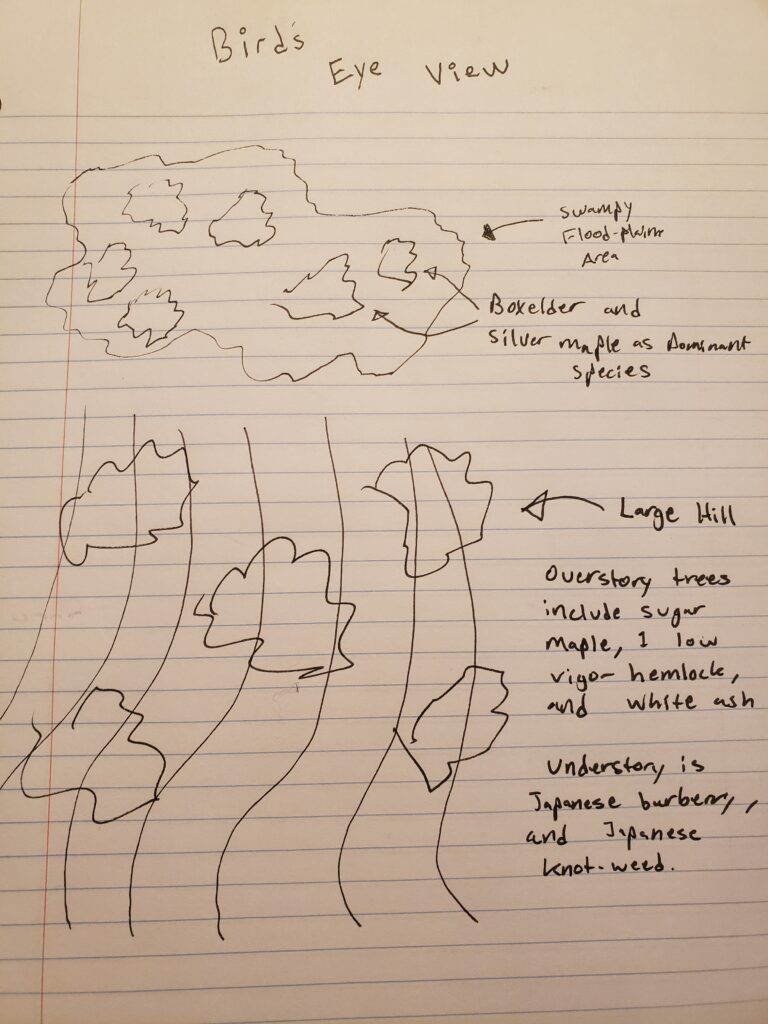There is less variation in tree species of my phenology site in Connecticut in comparison to my site in Burlington. Box elder and silver maple seem to be the dominant tree species within the swampy area. Outside of the seasonal flood area, the trees are composed of mainly white ash trees. These trees range from forty to sixty feet tall, and are rapidly dying from the infestation of emerald borer beetles. The bark on these trees is being eaten from the inside out, and the debris are scattered in piles at the base of the trees. Once a large white ash gets infected by this invasive pest, it has about two to four years before it completely dies. Japanese knotweed and Japanese barberry are the only visibly ground cover plants in this new phenology location. These invasive species are going to spread quickly over other native species, especially with the increased sunlight caused by the white ash die off. My phenology site in Burlington is composed of mainly clay/silt soil, whereas the soil in my Connecticut location is made up of organic leaf matter and clay/loam. The clay soil next to a natural spring in my Burlington location offers more nutrients, which explains the increased biodiversity of trees and understory plants.




